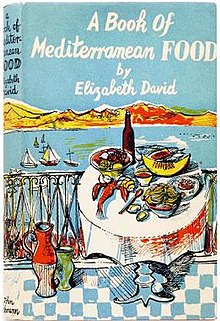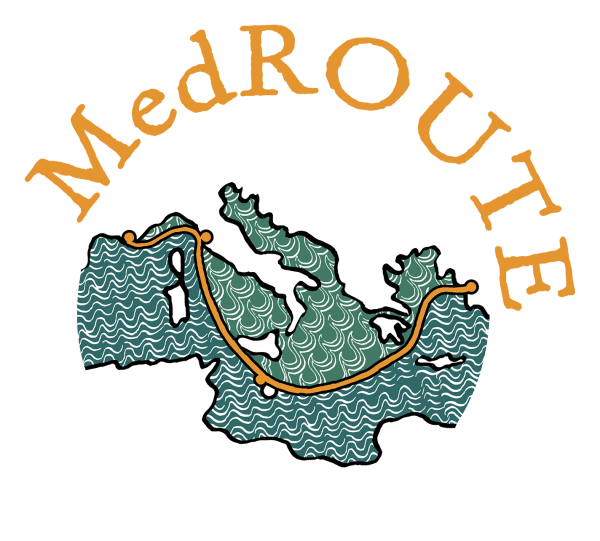Foodways as a subject of historical inquiry started to attract scholars’ attention in the 1980s, but it is in recent times that this became an almost fashionable topic, especially for the Mediterranean area. This is partly due to the long-lasting success enjoyed in anglophone countries by so-called Mediterranean cuisine and the Mediterranean diet from the 1950s on. Both these concepts were developed in non-Mediterranean contexts. Mediterranean cuisine implies a style – in its many regional expressions – in the way in which products of the Mediterranean lands are combined, that is, using the same raw materials with different handling procedures or the same procedures for different ingredients. Published in London in 1950, A Book of Mediterranean Food, by the English Elizabeth David, was a milestone in the affirmation of the concept of Mediterranean cuisine. On the other hand, the concept of the Mediterranean diet was based on the insights of the American doctor Ancel Keys, who studied the diseases linked to economic wealth that had begun to appear in 1950s American society. In Eat Well and Stay Well, together with his wife Margaret the nutritionist developed a poor diet based on that of the population of Southern Italy – where he had lived for forty years – promoting its adoption in the United States on account of the health benefits of daily consumption of fruit, vegetables, pasta, legumes, fish and olive oil.

The conceptualization of a common eating style in the Mediterranean space is echoed in Braudel’s work, as his stress on the geophysical similarity of the coastal areas and attention to the circulation of products and techniques in the Inner Sea led him to stress the similarity between Mediterranean foodways. This similarity, however, has been highly problematized by recent scholarship on the topic, in a kind of culinary version of the One-Plural dilemma. These works have been developed along two main research lines. On the one hand, they have analysed the sense of unfamiliarity and unease of travellers moving around the Mediterranean when approaching local foods. On the other hand, they have inquired into how food has been used in order to mark identarian belonging, often of a religious nature. These works refer to the anthropological approach to the study of what humans eat, considering taste as a socially constructed normative system of cultural practices, interiorized in the human biological system that reproduces itself, also influencing what human beings classifies as disgusting. In other words, an invincible repulsion for specific foods is culturally constructed, as pointed out by Lévi-Strauss: ‘la nourriture ne doit pas seulement être bonne à manger, elle doit être bonne à penser’ (Lévi-Strauss 1961). In Claude Fishler’s view, influenced by that of Lévi-Strauss, the close relationship between food and identity depends on the human quality of being omnivores, which allows human beings to construct highly differentiated eating systems according to which edible foods are available in different original contexts. The anxiety towards new foods depends on the principle of incorporation, that is allowing food to go beyond the frontier between the world and our body. This irreversible process established the identity: we are what we eat since we ‘incorporate’ the food qualities that become part of our very bodies, in a sort of transubstantiation that is the very holiness of the process. Cooking, then, is less a matter of ingredients than a matter of classification and rules that give order and sense to the world. Manipulated according to conventional rules, food is marked, labelled and understood, finally becoming familiar (Scholliers 2012).
More recent approaches have supported a much looser relationship between food and the construction of identity, seen mainly as a cultural identification and less in structuralist terms. One of the most interesting topics in this context has been dealt with by Claude Grignon. In a paper of 2012, Grignon has focussed on the meaning of eating together, based on norms concerning the selection of eating partners, that is, commensality as a gathering both aimed at accomplishing a material need and as a symbolic obligation of a collective nature. To study commensality is to study division in society or, better, ‘the way society organises itself by dividing.’ He has also distinguished between everyday commensality and commensality of an exceptional nature, the latter being much more well-documented. Exceptional commensality is ritualized, much more memorable and serves as a strong identity builder. This attention to the creation of ritualized moments during which social groups share food is particularly crucial in the study of groups of foreigners in new environments because food re-knots the bonds of the community together. Foodways preserve groups’ identities in the diaspora, constituting a defence against the acculturation of the space of arrival, as in the case of the Jews (Douglas 1966) or, most recently, of Italian emigrants in the United States (Cinotto 2013).


 Medroute is funded by the European Union (Grant n. XXXXXXXXX) through Marie Curie Action.
Medroute is funded by the European Union (Grant n. XXXXXXXXX) through Marie Curie Action.